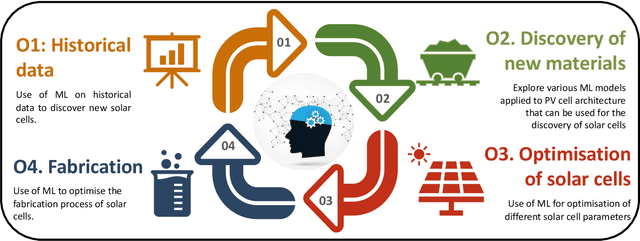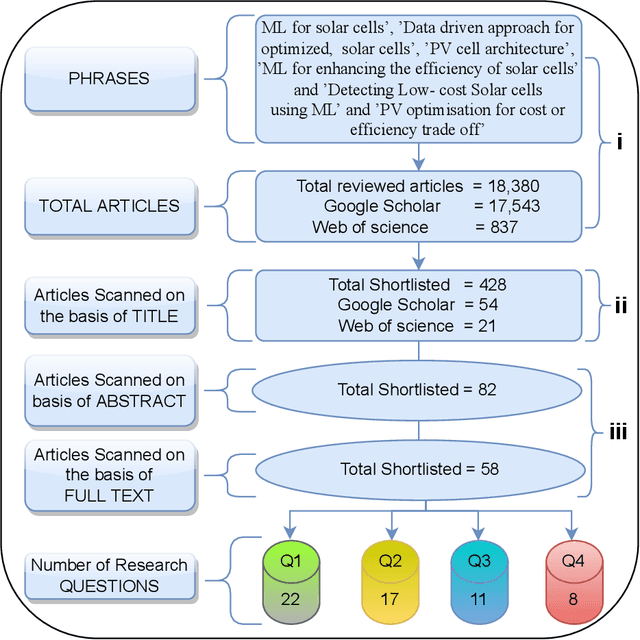Rami Ghannam
Machine learning for accelerating the discovery of high performance low-cost solar cells: a systematic review
Dec 26, 2022



Abstract:Solar photovoltaic (PV) technology has merged as an efficient and versatile method for converting the Sun's vast energy into electricity. Innovation in developing new materials and solar cell architectures is required to ensure lightweight, portable, and flexible miniaturized electronic devices operate for long periods with reduced battery demand. Recent advances in biomedical implantable and wearable devices have coincided with a growing interest in efficient energy-harvesting solutions. Such devices primarily rely on rechargeable batteries to satisfy their energy needs. Moreover, Artificial Intelligence (AI) and Machine Learning (ML) techniques are touted as game changers in energy harvesting, especially in solar energy materials. In this article, we systematically review a range of ML techniques for optimizing the performance of low-cost solar cells for miniaturized electronic devices. Our systematic review reveals that these ML techniques can expedite the discovery of new solar cell materials and architectures. In particular, this review covers a broad range of ML techniques targeted at producing low-cost solar cells. Moreover, we present a new method of classifying the literature according to data synthesis, ML algorithms, optimization, and fabrication process. In addition, our review reveals that the Gaussian Process Regression (GPR) ML technique with Bayesian Optimization (BO) enables the design of the most promising low-solar cell architecture. Therefore, our review is a critical evaluation of existing ML techniques and is presented to guide researchers in discovering the next generation of low-cost solar cells using ML techniques.
Teaching Undergraduate Students to Think Like Real-World Systems Engineers: A Technology-Based Hybrid Learning Approach
Nov 26, 2021



Abstract:A hybrid teaching approach that relied on combining Project Based Learning with Team Based Learning was trialled in an engineering module during the past five years. Our motivation was to expose students to real-world authentic engineering problems and to steer them away from the classical 'banking' approach, with a view to developing their systems engineering skills via deeper and more collaborative learning. Our third year module was called Team Design and Project Skills and was concerned with 320 students dividing themselves in teams to develop a smart electronic system. We reveal module design details and discuss the effectiveness of our teaching approach via analysis of student grades during the past five years, as well as data from surveys that were completed by 68 students. 64% of surveyed students agreed that the module helped broaden their perspective in electronic systems design. Moreover, 84% recognised that this module was a valuable component in their degree programme. Adopting this approach in an engineering curriculum enabled students to integrate knowledge in areas that included control systems, image processing, embedded systems, sensors, as well as team working, decision making, trouble shooting and project planning.
 Add to Chrome
Add to Chrome Add to Firefox
Add to Firefox Add to Edge
Add to Edge